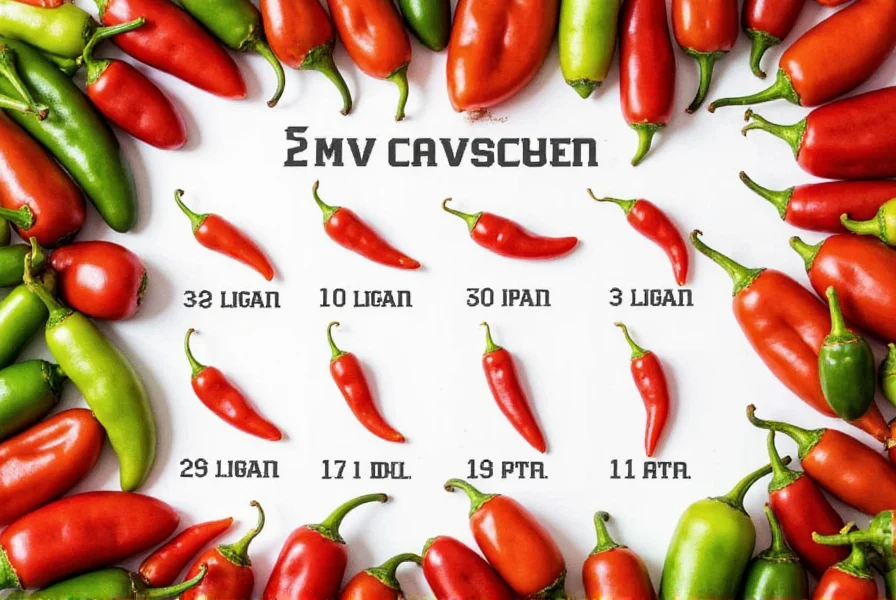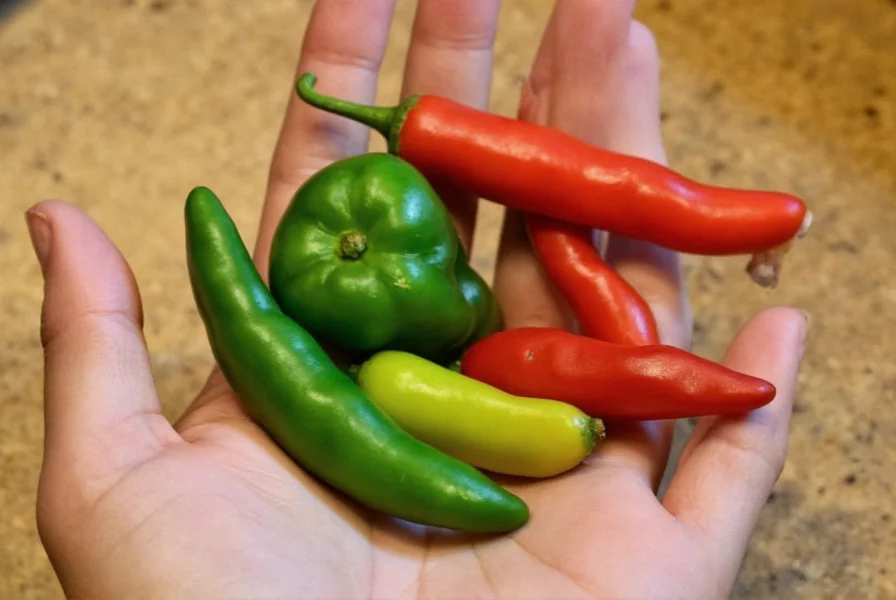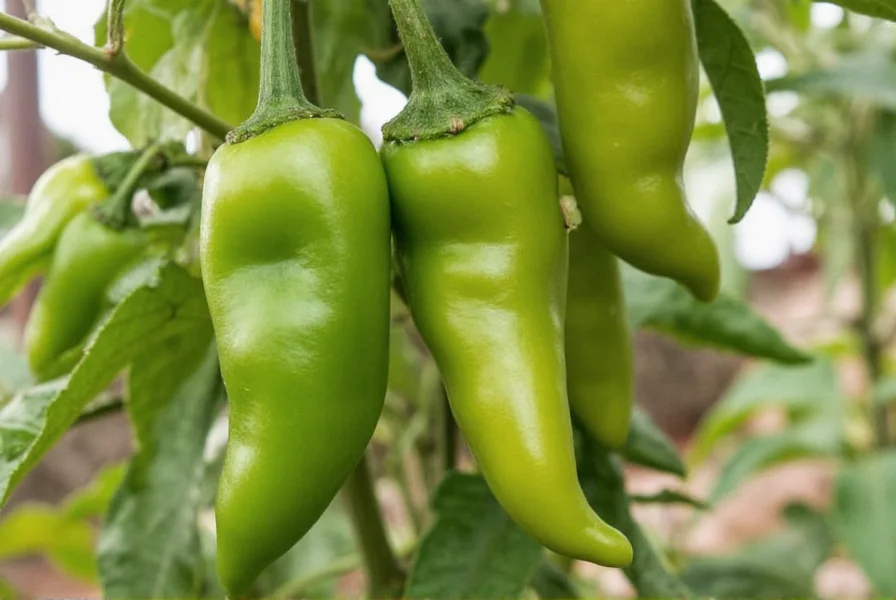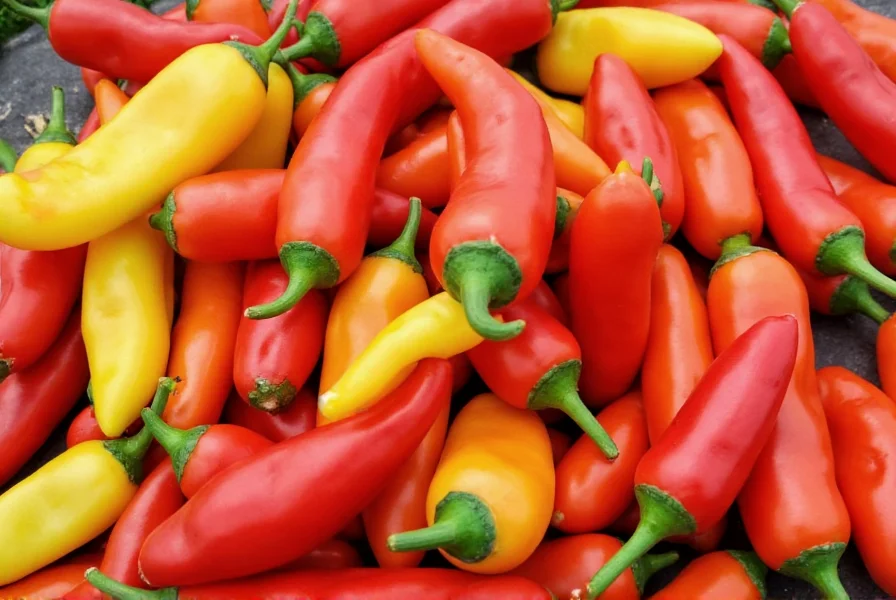
Table of Contents

3 Key Indicators of Ripeness
Here are the 3 key indicators to determine if your serrano peppers are ripe and ready for harvest:
| Indicator | Green Stage | Mature Stage (Red/Yellow/Orange) |
|---|---|---|
| Color | Bright green | Transitioning to red, orange, yellow, or brown |
| Size | 1–2 inches long | 1.5–2.5 inches long |
| Texture | Firm, smooth skin | Thicker walls, may start to wrinkle slightly |
| Heat Level (SHU) | 10,000–15,000 | 15,000–23,000 |
Source: Chile Pepper Institute, New Mexico State University (chilepepperinstitute.org/fact-sheets)
Additional visual clues to look for:
- Pepper Color: If you want a milder flavor, harvest when bright green. For maximum heat and sweetness, wait until they turn red or orange.
- Peduncle Connection: A tight stem connection means the pepper is still developing; if it starts loosening up, it's probably mature and ready to pick.
- Pepper Firmness: Avoid mushy or soft peppers. They should feel firm but not rock-hard.
- Plant Maturity Timeline: Serrano peppers follow a predictable growth cycle (source: University of Vermont Extension):
- Days 0-60: Seed germination and seedling development
- Days 60-80: Transplanting and vegetative growth
- Days 80-100: Flowering and initial fruit set
- Days 100-120: Peak harvest for mature (red) peppers
- Contextual Boundaries: Ripeness indicators shift significantly under different conditions. In high-heat environments (above 90°F/32°C), color transition accelerates but wrinkling occurs prematurely. Cool climates (below 70°F/21°C) delay maturation by 2-3 weeks. Optimal soil pH (6.0-7.0) is critical for full color development; outside this range, peppers may remain green despite reaching maturity (source: UC Agriculture and Natural Resources).
Harvesting Tips & Tricks
Once you've determined your serrano is ripe, here's how to pick it without stressing your plant or yourself.
- Use Pruning Shears or Scissors: Never yank! Cut the pepper just above the calyx to avoid damaging the plant.
- Harvest Early in the Morning: The oils are less volatile then, making for a more pleasant picking experience (no burning fingers!).
- Wear Gloves: Capsaicin loves sticking to your skin, so protect your hands unless you enjoy spontaneous eye irritation later.
- Don't Strip the Plant: Leave a few peppers behind to encourage continued production.

Storage Methods
You've got your peppers — now what? Here's how to keep them fresh, flavorful, and usable longer.
Storing Fresh Peppers
- In the Fridge: Store unwashed peppers in a plastic bag in the crisper drawer. Lasts up to two weeks.
- Freezing Whole: No need to prep — just toss them in a freezer bag and freeze. They'll keep indefinitely and are perfect for roasting or chopping directly from frozen.
- Drying Options: Air-dry them in a warm, well-ventilated space or use a dehydrator for faster results.

Canning & Pickling
If you're feeling crafty (or just overwhelmed by the bounty), consider canning or pickling your serranos. These methods preserve both flavor and spice for months.
- Pickled Serranos: Add garlic, vinegar, salt, and sugar for a zesty condiment.
- Chili Oil: Infuse oil with sliced peppers for a fiery drizzle perfect for noodles or toast.
Frequently Asked Questions
When is a serrano pepper ready to pick?
Serrano peppers are ready to pick when they reach 1-2.5 inches in length (depending on color stage), have firm skin, and have developed their mature color. For milder peppers, harvest when bright green; for hotter, sweeter peppers, wait until they turn red, orange, or yellow. The stem connection should be slightly loose, indicating maturity.
How can I tell if my serrano peppers are ripe?
You can tell serrano peppers are ripe by checking four key indicators: 1) Color - bright green for younger peppers, transitioning to red/orange/yellow for mature ones; 2) Size - typically 1.5-2.5 inches long when fully mature; 3) Texture - firm but not rock-hard, with smooth skin; 4) Stem connection - should be slightly loose rather than tightly attached to the plant.
Do serrano peppers get hotter as they ripen?
Yes, serrano peppers generally get hotter as they ripen and change color from green to red/orange/yellow. This is because the capsaicin content (the compound that creates heat) increases as the pepper matures. Red serranos typically measure between 10,000-23,000 Scoville units, making them noticeably hotter than their green counterparts.
Should I pick serrano peppers when they're green or red?
The choice between green and red serranos depends on your flavor preference and intended use. Green serranos have a grassy, fresh flavor and milder heat, making them great for salsas and fresh preparations. Red serranos are sweeter, smokier, and hotter, ideal for sauces, roasting, or when you want maximum flavor complexity. Many growers harvest some at each stage to experience the full flavor spectrum.
How long does it take for serrano peppers to ripen?
Serrano peppers typically begin producing fruit 80-100 days after transplanting. The time from flowering to mature pepper is usually 3-4 weeks. The exact timing can vary based on growing conditions, climate, and specific variety. Most gardeners start seeing ripe peppers in mid to late summer, with production continuing until the first frost.
What happens if I pick serrano peppers too early?
If you pick serrano peppers too early (before they've reached adequate size and firmness), they'll be less flavorful and may not reach their full size potential. While they won't continue to grow after picking, they will continue to change color if kept at room temperature. Very immature peppers might have thinner walls and less developed flavor profiles, but they're still edible - just milder in heat and flavor.
Can serrano peppers continue ripening after being picked?
Yes, serrano peppers can continue to ripen after being picked, similar to tomatoes. Place harvested green serranos in a paper bag at room temperature away from direct sunlight. They'll gradually change color to yellow, orange, or red over 1-2 weeks. Note that the heat level will increase slightly during this post-harvest ripening process.
Final Thoughts
Knowing when a serrano pepper is ready to pick is the key to unlocking its full potential in the kitchen. Whether you like them green and zesty or red and richly flavored, the right timing will elevate your culinary game and impress even the most seasoned spice lover.
Remember, there's no one-size-fits-all answer — it all depends on your taste preferences and intended use. So get out there, experiment with different stages of ripeness, and find your perfect pepper moment.
Happy harvesting, fellow spice explorers!










 浙公网安备
33010002000092号
浙公网安备
33010002000092号 浙B2-20120091-4
浙B2-20120091-4